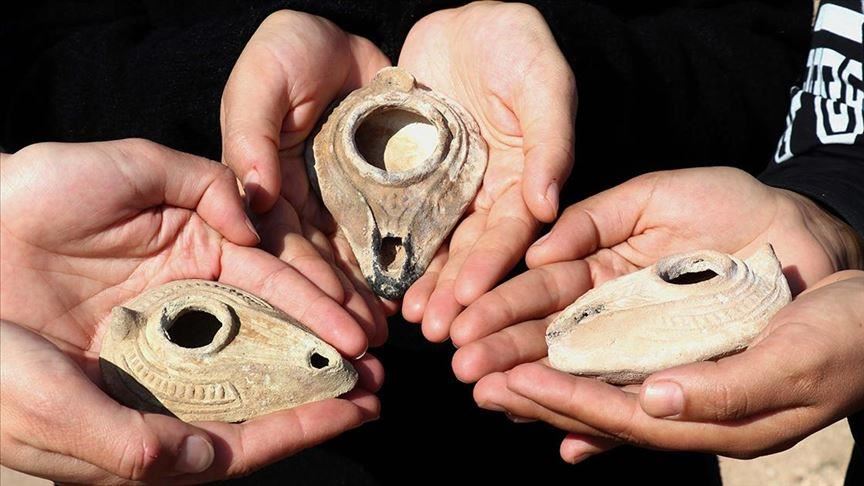Ancient Roman-era oil lamps found in southeast Turkey
In southeastern Diyarbakir in Turkey, archeologists have discovered 48 old lamps from around 1,500 years ago.
During excavations at Castle Zerzevan in the district of Cinar, the lamps were uncovered.
Excavations are being performed by Aytac Coskun, Assistant Professor of Archaeology at Dicle University.
It was said that the lamps that would date from Late Roman. Early Byzantine period, would provide more information about the castle’s history.
Coskun said the place where the lamps were discovered could have been an ancient shop. “Each lamp has a different sign on it, including sun, stars or letters sometimes. They all have a different meaning,” Coskun said.
The lamps were unearthed near a 1,700-year-old Roman-era underground Mithras temple, which was discovered in 2017.
The castle is situated on a 55,200-square-meter area surrounded with walls stretching 12 to 15 meters high and 1,200 meters long, along with a 21-meter high watchtower and guard castle.
Excavations near the Demirolcek neighborhood, located 13 kilometers from the Cinar district, have been ongoing since 2014 with the help of Turkey’s Ministry of Culture and Tourism, the Diyarbakir Museum, the Diyarbakir governorship, the Cinar district governorship, and Dicle University.
The vast space also includes a church, administrative buildings, ruins of ancient homes, grain and weapon storage facilities, an underground temple, underground shelters, rock tombs, and water channels.
Previously, an underground church and shelter with a capacity to hold 400 people, houses and hidden passages were unearthed.
The Zerzevan Castle is situated along the ancient route of military premises and located on a 124-meter-high rocky hill in a strategic location between Amida and Dara.
The settlement overlooks the entire valley and once controlled a large area on a key, ancient trade path. Once a strategic Roman border garrison town, the castle also witnessed the clashes between Romans and Sassanians.

The first settlement was named “Samachi” and while it is not certain when it was built, the excavations are close to revealing its age.
The castle walls were repaired at the time of Byzantine Emperor Anastasios (AD 491-518) and Justinian (AD 527-565) while some parts were completely rebuilt.





